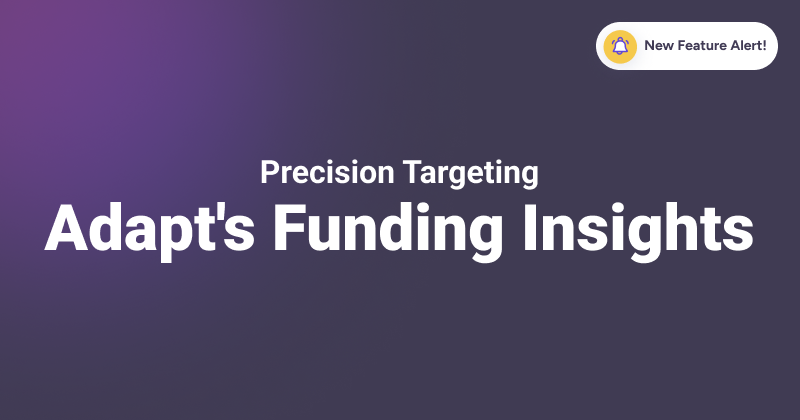In today’s highly competitive business landscape, lead generation is considered to be the top objective for sustainable growth. Mastering the art of lead generation is essential for fueling your sales pipeline, expanding your customer base, and driving revenue. However, the process of capturing and nurturing leads is a challenging task, as 61% of marketers consider lead generation as the most challenging of all.
However, in pursuit of generating leads, companies often face the decision between prioritizing quantity or quality. While quantity may seem appealing, it is important to recognize the value of good leads – prospects who express genuine interest in your product and are actively seeking to make a purchase. Good leads have the potential to significantly impact sales and return on investment (ROI). Now this is only possible when you create a process of identifying qualified leads with thorough planning, research and analysis.
What is Lead Generation?
Lead generation can be defined as a process of finding the right buyers who are interested in your product or service offering so that you can transform them into paying customers.
For marketing and sales teams lead generation is the top priority as it’s directly relational to business revenue and growth. Most of the teams would spend time and resources in building a robust framework that ensures a continuous flow of leads for the business to thrive.

Source: Salesmate
As shown in the above image, lead generation would comprise of following priorities:
- Generating high-quality leads is a continual process
- Attracting more web traffic for building a robust sales pipeline
- Improving brand reputation to build credibility among buyers
- Enhancing consumer engagement and loyalty
Lead generation when done right can create opportunities for generating revenue and driving sustainable growth. To ensure that all the priorities are achieves marketers employ various strategies for lead generation. Some common strategies include:
- Content Marketing: Creating valuable and relevant content, such as blog posts, e-books, whitepapers, and videos, to attract and engage the target audience.
- Search Engine Optimization (SEO): Optimizing website, content based on the keywords your target audience would search to gain visibility in search engine results.
- Social Media Marketing: Leveraging social media platforms to expand brand reach, engage with the target audience, and drive traffic to the website.
- Email Marketing: Building an email list of interested prospects and nurturing them through personalized and targeted email campaigns.
- Lead Magnets and Landing Pages: Creating compelling lead magnets, such as e-books, webinars, or free trials, and using dedicated landing pages to capture visitor information.
- Webinars and Events: Hosting educational webinars or participating in industry events to showcase expertise, connect with potential customers, and generate leads.
By implementing a combination of these strategies, marketers can effectively generate high-quality leads, attract web traffic, enhance brand reputation, and foster consumer engagement and loyalty.
However, achieving these priorities comes with its own set of challenges and has to be done in a much more structured and strategic framework. Let’s understand the challenges of the lead generation process and dive into building one for you.
What are the challenges of lead generation process?
Although on the micro level, there would be more challenges that you may encounter. To give you an overview, here are the top 3 lead-generation challenges that sales and marketing teams face
1. Creating a targeted lead generation strategy:
In a crowded digital landscape, where modern buyers interact and consume huge data – capturing the attention of potential leads who are genuinely interested in your product or service can be a daunting task. This makes the job of marketers more challenging as they have to distribute time and resources in multiple aspects strategically. Right from defining ideal customer profiles, conducting thorough market research, and leveraging data-driven insights to optimize their targeting strategies.
2. Quality over quantity - Getting qualified leads:
It’s not just about acquiring a large volume of leads. You need to ensure that these leads are genuinely interested so that your sales resources are not burning out. One of the most challenging element is to strike the balance between lead quality and lead quantity. Here you have to build a mechanism for the lead qualification that comprises of lead scoring, verification, optimization, and more.
3. Nurturing leads and Driving conversions:
Nurturing and driving conversions is not as easy as it sounds! Leads will not directly purchase right after signing up for your product or requesting a demo. You have to carefully engage the leads, nurture them, and enable them to climb the buyer’s journey. through the sales funnel. Automation tools, personalized email campaigns, and tailored content can help marketers stay connected with leads, build relationships, and ultimately drive conversions.
As we understand the top challenges marketers face during lead generation, let’s deep dive into what would be an all-in-one framework to nail your lead generation process.
10 Steps for Lead Generation Process
Every lead that comes to your website has to go through the buyer journey. Right from awareness to closing the deal, you would require consistent nudges across the journey. Here are the 10 steps you can follow to build a robust lead generation process,
1. Identify Your Target Audience:
The first step in the lead generation process is understanding your ideal target audience within your niche This involves analyzing your existing customer base, conducting market research, creating an ideal customer profile, and building buyer personas. You may also have to dig deeper to understand their demographics, interests, pain points, and preferences. This knowledge will help you tailor your marketing efforts and messages to resonate with your ideal customers.
2. Develop a Lead Magnet:
This is important because modern buyers prefer self-learning and research. So creating any form of content that educates or informs your target audience in exchange for their contact information. It can be an e-book, whitepaper, webinar, or podcast or any other resource that addresses a specific problem or provides valuable insights. Now here you have to note that it should not be a generic piece of content but targeted to your niche. Addressing their pain points and helping them understand how your product can solve – is the game changer.
3. Create a Landing Page:
A landing page is a dedicated web page designed to capture leads. It should have a clean layout, compelling copy, and a clear call to action. Use persuasive elements, such as strong headlines, engaging visuals, and concise forms, to encourage visitors to provide their contact details in exchange for your lead magnet. Think landing page as a storyboard that addresses the challenges of your targeted audience. This will help you accelerate conversions.
4. Generate Traffic:
Once your landing page is ready, you need to drive traffic to it. This can be done using both organic as well as paid channels undertaking respective strategies to achieve the goal. 60% of B2B marketers say SEO has the most impact on lead generation. However, it’s not one thing that fits for all, so utilizing other channels like social media marketing, content marketing, paid advertising, and email campaigns is essential to attract targeted traffic to your landing page.
5. Optimize Lead Capture:
Make it as easy as possible for visitors to provide their information. Optimize your lead capture forms by keeping them short and straightforward, asking for only essential details. You can use progressive profiling to gather additional information over time as you engage with the leads.
6. Score your Leads:
Lead scoring involves assigning a value or score to each lead based on their actions, behaviors, and characteristics. This helps prioritize leads and identify those who are most likely to convert into customers. Assign scores based on factors such as engagement level, demographic fit, and intent to purchase. The best way to score your leads is by analyzing your customer behaviors and characteristics in the buying journey.
7. Lead Nurturing:
No one will directly go and purchase once they sign-up for the product. This is where lead nurturing comes into play! Create a process of building relationships with leads and provide them with relevant and valuable content. Use email marketing, personalized messaging, and automation tools to deliver targeted content at different stages of the buyer’s journey, keeping leads engaged and moving them closer to making a purchase.
8. Lead Qualification:
Lead qualification is one of the crucial steps to implement as you need to to identify leads that are sales-ready. This involves determining their level of interest, budget, authority to make a purchase decision, and timeline. Qualify leads through phone calls, surveys, or automated lead qualification workflows.
9. Closing the Deal:
Once a lead is qualified and sales-ready, it’s time to convert them into a customer. The sales team takes over at this stage, leveraging their expertise to address any remaining concerns, provide tailored solutions, negotiate pricing, and close the deal.
10. Measure Results:
To gauge the effectiveness of your lead generation efforts, measure key metrics such as conversion rates, cost per lead, lead-to-customer ratio, and return on investment (ROI). Analyze the data and make data-driven decisions to optimize your lead generation process continuously. Use analytics tools and CRM systems to track and monitor lead behavior, engagement, and conversions.
How to manage the lead generation process?
Managing the lead generation process effectively is crucial for maximizing results and driving business growth. Here are some key steps to manage,
1. Set Clear Goals:
Start by defining clear and specific goals for your lead generation efforts. Establish targets for lead volume, lead quality, conversion rates, and revenue generation. These goals will guide your strategies and help you track progress.
2. Define Lead Generation Strategies:
Determine the most effective strategies for reaching your target audience and capturing leads. There are multiple channels to choose from – content marketing, social media marketing, search engine optimization (SEO), paid advertising, email marketing, and more. Align your strategies with your target audience’s preferences and behavior.
3. Utilize Technology and Tools:
Leverage technology and automation tools to streamline and optimize your lead generation process. Implement a robust customer relationship management (CRM) system to manage leads, track interactions, and monitor the pipeline. Utilize marketing automation tools for email marketing, lead nurturing, scoring, and personalized communication.
4. Align Marketing and Sales Teams:
Foster collaboration and alignment between marketing and sales teams. Establish effective communication channels and processes to ensure smooth lead handoff from marketing to sales. Regularly update each other on lead insights, progress, and feedback to improve overall lead management.
5. Ongoing Optimization:
Regularly review and optimize your lead generation strategies, campaigns, and processes. Test different messaging, channels, and offers to identify what resonates best with your target audience. Monitor market trends and stay updated with new technologies and tactics to stay ahead in the lead generation game.
By following these steps and continuously refining your approach, you can effectively manage the lead generation process, generate high-quality leads, and drive business growth.
How Adapt can help you generate qualified leads?
With advancedl features and comprehensive database, Adapt empowers marketers to build targeted b2b email lists and engage with prospects who are genuinely interested in their products or services. Here’s how Adapt’s streamlines your lead generation process,

- Advanced Search and Filtering: Adapt provides powerful search and filtering capabilities to help you find and target your ideal prospects. You can search for leads based on criteria such as job title, industry, company size, location, and more. This allows you to narrow down your search and focus on the prospects most likely to be interested in your products or services.
- Accurate and Up-to-date Data: Adapt’s lead intelligence platform provides access to a vast database of contacts and companies. The platform continuously updates its data, ensuring that you have access to accurate and current information. This helps you avoid wasting time and resources on outdated or incorrect contact details.
- Verified Email Addresses: Adapt provides verified contact information, including email addresses, of the prospects you are targeting. This saves you the time and effort of manually searching for contact details or relying on outdated databases. With accurate email addresses, you can directly reach out to your potential leads, increasing the chances of engagement and conversion.
- Email List Building: Adapt allows you to build targeted email lists based on your specific criteria. You can create custom lists based on factors such as job function, industry, and geographic location. By segmenting your lists and tailoring your messaging to specific audience segments, you can improve the relevance and effectiveness of your email campaigns.
- Integration with CRM: Adapt integrates with popular CRM and marketing automation tools. This integration enables you to seamlessly transfer your qualified leads from Adapt to your CRM or marketing automation system, ensuring a smooth transition from lead generation to nurturing and conversion.
Build a targeted list of leads and improve your conversion rates
Find leads from anywhere on the web with Adapt’s 200M+ verified contact database
Process + Right Execution = Growth
The lead generation process holds the power to create awareness, improve product adoption, turn prospects into loyal customers and drive revenue engine. However, mastering the art of lead generation requires a strategic approach, continuous optimization, and a deep understanding of your target audience.
Throughout this blog post, we’ve explored the key steps and challenges involved in the lead generation process. From identifying your target audience and creating compelling lead magnets to nurturing and qualifying leads, each stage plays a critical role in converting potential customers into valuable advocates for your brand.
Remember, the lead generation process is not a one-time endeavor but an ongoing journey. Stay agile, adapt to changing market dynamics, and embrace innovative approaches to stay ahead of the competition. With a customer-centric mindset, a commitment to delivering value, and a data-driven approach, you can achieve remarkable results in generating high-quality leads and driving remarkable business growth.
So, go forth, armed with the knowledge and insights gained from this guide, and unlock the vast potential of lead generation to propel your business toward unprecedented heights. The journey awaits, and the possibilities are endless.



